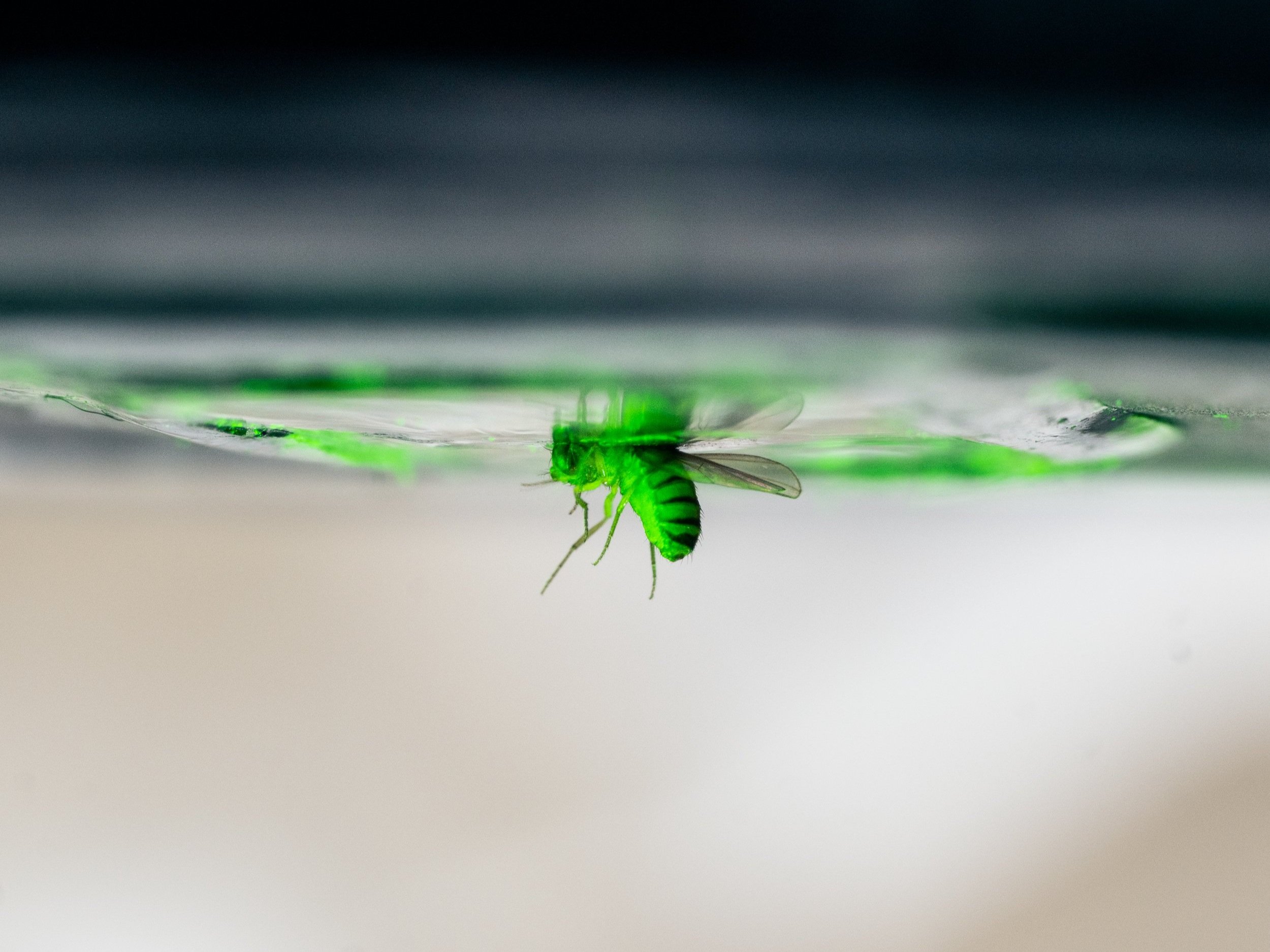
“A fly under the microscope presented with a color stimulus.”
Photograph credits - Thomas Barlow
RESEARCH
In the Behnia lab, we want to understand how animals choose appropriate behaviors in response to the chaotically dynamic world they live in. Behavior is an end result of the activity of ensembles of neurons in the brain interpreting complex information coming from sensory receptors, and translating them into relevant motor actions. But exactly which neuronal circuits interpret sensory information and how these circuits drive specific behavior is relatively unknown.
In this context, we focus on how sensory information is encoded within the brain. We ask how computations used for encoding information are implemented at the circuit and cellular level and how different neuronal types carry out the algorithms necessary for the circuit to function. We are also interested in understanding how these sensory circuits are modulated by internal states such as motivation and attention.
The Drosophila visual system is a perfect model for investigating these questions. The fly brain is significantly complex yet compact. With about 1,000 times fewer neurons than mice and 1,000,000 times fewer than humans, the fly brain presents us with the opportunity to research neuronal properties at a much higher resolution. The fruit fly is also capable of many sophisticated, visually-guided behaviors, providing us with a ‘read-out’ for manipulation of the system. This, combined with the availability of a large set of genetic tools to manipulate neuronal function makes it an ideal system to study circuits underlying sensory processing.